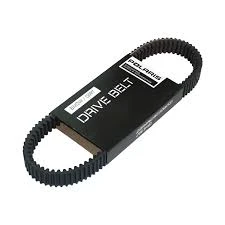- Arabic
- French
- Russian
- Spanish
- Portuguese
- Turkish
- Armenian
- English
- Albanian
- Amharic
- Azerbaijani
- Basque
- Belarusian
- Bengali
- Bosnian
- Bulgarian
- Catalan
- Cebuano
- Corsican
- Croatian
- Czech
- Danish
- Dutch
- Afrikaans
- Esperanto
- Estonian
- Finnish
- Frisian
- Galician
- Georgian
- German
- Greek
- Gujarati
- Haitian Creole
- hausa
- hawaiian
- Hebrew
- Hindi
- Miao
- Hungarian
- Icelandic
- igbo
- Indonesian
- irish
- Italian
- Japanese
- Javanese
- Kannada
- kazakh
- Khmer
- Rwandese
- Korean
- Kurdish
- Kyrgyz
- Lao
- Latin
- Latvian
- Lithuanian
- Luxembourgish
- Macedonian
- Malgashi
- Malay
- Malayalam
- Maltese
- Maori
- Marathi
- Mongolian
- Myanmar
- Nepali
- Norwegian
- Norwegian
- Occitan
- Pashto
- Persian
- Polish
- Punjabi
- Romanian
- Samoan
- Scottish Gaelic
- Serbian
- Sesotho
- Shona
- Sindhi
- Sinhala
- Slovak
- Slovenian
- Somali
- Sundanese
- Swahili
- Swedish
- Tagalog
- Tajik
- Tamil
- Tatar
- Telugu
- Thai
- Turkmen
- Ukrainian
- Urdu
- Uighur
- Uzbek
- Vietnamese
- Welsh
- Bantu
- Yiddish
- Yoruba
- Zulu
1-р сар . 01, 2025 08:56 Back to list
Understanding Timing Belt Interference Engines and Their Impact on Vehicle Performance
Understanding Interference Engines and Timing Belts
When it comes to automotive engineering, one of the critical aspects that often goes unnoticed by the average car owner is the relationship between an engine's design and its timing belt. Particularly, the distinction between interference and non-interference engines plays a vital role in engine performance and maintenance.
What is an Interference Engine?
An interference engine is designed in such a way that the pistons and valves occupy the same space within the engine block but at different times during the engine’s operation. Essentially, if the timing belt fails—often due to wear and tear or lack of maintenance—the valves may remain open when the pistons are at their peak position. This can lead to catastrophic engine damage, as the two components can collide, causing bent valves, damaged pistons, and a complete engine overhaul.
On the contrary, non-interference engines are designed to prevent this kind of catastrophic failure. In these engines, the valves and pistons cannot occupy the same space simultaneously. Thus, if a timing belt were to fail, the engine would simply stop running without severe internal damage.
The Role of the Timing Belt
The timing belt is a critical component of an interference engine, responsible for synchronizing the rotation of the crankshaft and camshaft. This synchronization is crucial for the engine's timing, ensuring that valves open and close at the correct intervals. Typically made of reinforced rubber, timing belts are designed to withstand high temperatures and stresses.
Regular maintenance of the timing belt is essential, as it typically has a recommended replacement interval of around 60,000 to 100,000 miles, depending on the manufacturer. Failure to replace a worn-out timing belt can lead to a breakdown and potentially costly repairs.
interference engine timing belt

Consequences of Timing Belt Failure
The potential consequences of a timing belt failure in an interference engine are severe. When the timing belt snaps, the engine can suffer extensive damage, resulting in shattered pistons, bent valves, and even damage to the cylinder head. The costs for such repairs can quickly exceed several thousand dollars, making it critical for drivers of interference engines to stay vigilant about their vehicle’s maintenance schedule.
Prevention and Maintenance
To ensure the longevity and reliability of an interference engine, adhering to a thorough maintenance regimen is key. Regular inspections of the timing belt can help detect signs of wear such as fraying, cracking, or glazing. It’s also advisable to replace the water pump and tensioners during timing belt replacement, as these components are often linked and can affect the performance of the timing belt.
Many vehicle service centers provide a timing belt replacement service, often bundled with other essential maintenance tasks. It’s crucial to consult the vehicle’s owner’s manual for specific recommendations related to the timing belt and heed any alerts regarding engine performance.
Conclusion
In summary, understanding the differences between interference and non-interference engines, along with the crucial role of the timing belt, is vital for any vehicle owner, particularly those who drive vehicles with interference engines. Proactive maintenance not only extends the life of the engine but also guarantees a smoother, more reliable driving experience. By prioritizing regular checks and timely replacements of the timing belt, drivers can avoid the nightmare of engine failure and the hefty repair bills that accompany it.
-
Korean Auto Parts Timing Belt 24312-37500 For Hyundai/Kia
NewsMar.07,2025
-
7PK2300 90916-T2024 RIBBED BELT POLY V BELT PK BELT
NewsMar.07,2025
-
Chinese Auto Belt Factory 310-2M-22 For BMW/Mercedes-Benz
NewsMar.07,2025
-
Chinese Auto Belt Factory 310-2M-22 For BMW/Mercedes-Benz
NewsMar.07,2025
-
90916-02660 PK Belt 6PK1680 For Toyota
NewsMar.07,2025
-
drive belt serpentine belt
NewsMar.07,2025

